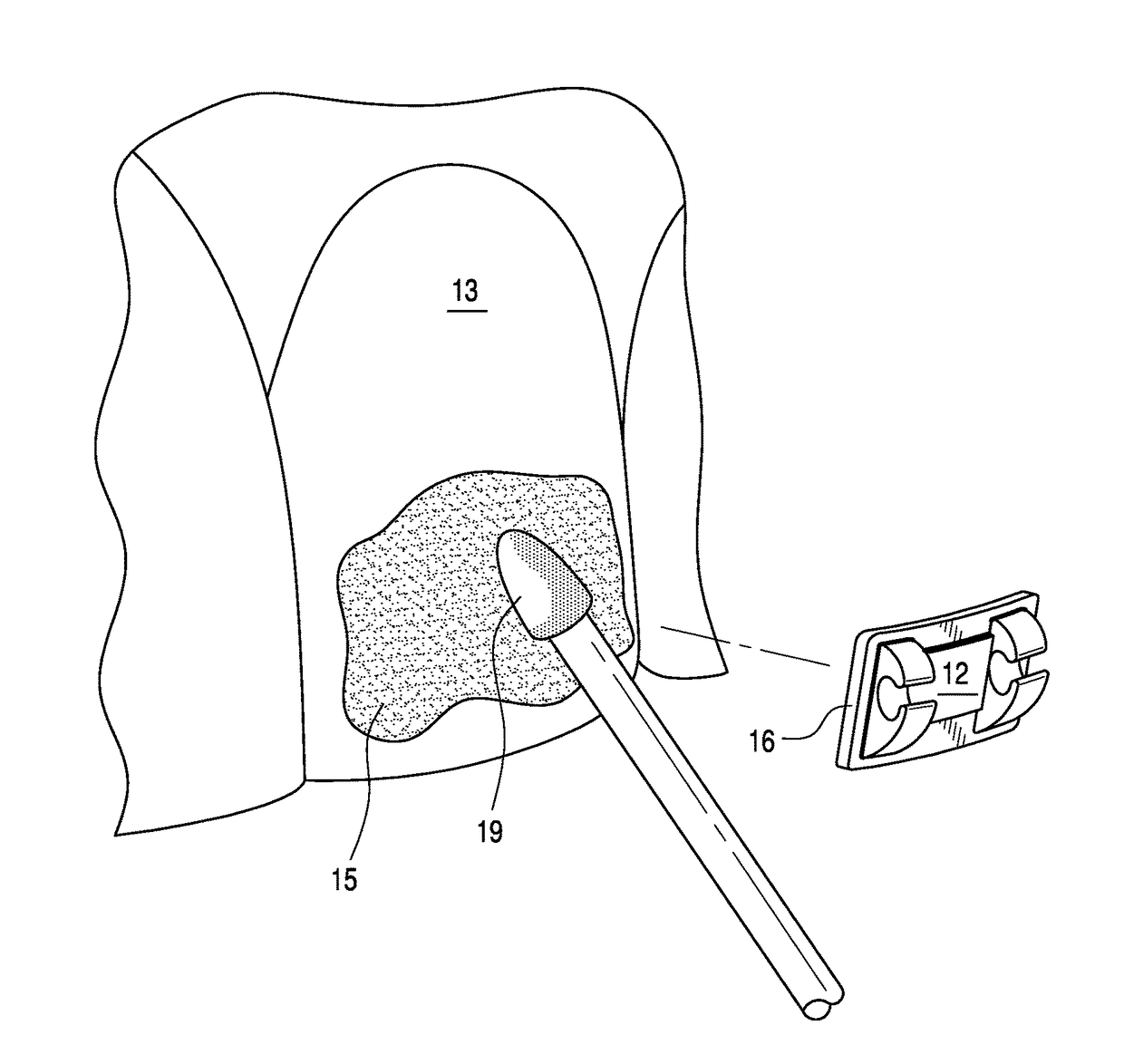Adjustable orthodontic bracket and method using a microstructured shape memory polymer surface with reversible dry adhesion
a microstructured shape memory, orthodontic technology, applied in brackets, dental surgery, medical science, etc., can solve the problems of excessive crowding of teeth, difficulty in precisely positioning each bracket, and exacerbated problems, and achieve excellent dry adhesive performance, dramatic shift in elastic modulus, and exceptional dry adhesion performance
- Summary
- Abstract
- Description
- Claims
- Application Information
AI Technical Summary
Benefits of technology
Problems solved by technology
Method used
Image
Examples
Embodiment Construction
[0045]As illustrated, in FIG. 1 a set of orthodontic braces 10 includes a plurality of orthodontic brackets 12 and an archwire 14 for applying forces to reposition the upper teeth in a patient's mouth. As shown in FIG. 1, the orthodontic brackets 12 are directly bonded to the surfaces of a patient's upper teeth. The latter feature is more clearly shown in FIG. 2 wherein a single bracket 12 is securely bonded to a single tooth by an orthodontic bonding material or adhesive. Bonding materials commonly used in orthodontics to adhere a bracket to a tooth surface are composite resins such as Transbond XT (Ref 712-036 manufactured by 3M Unitek), or other similar products manufactured by Ormco, Densply or Reliance, or thermoplastic materials.
[0046]For contrast, FIG. 3 illustrates a base member 16 preferably of metal that is bonded directly to a tooth by a thin layer of an orthodontic adhesive and is positioned between a relatively flat base of the orthodontic bracket 12 and the tooth 13. I...
PUM
 Login to View More
Login to View More Abstract
Description
Claims
Application Information
 Login to View More
Login to View More - R&D
- Intellectual Property
- Life Sciences
- Materials
- Tech Scout
- Unparalleled Data Quality
- Higher Quality Content
- 60% Fewer Hallucinations
Browse by: Latest US Patents, China's latest patents, Technical Efficacy Thesaurus, Application Domain, Technology Topic, Popular Technical Reports.
© 2025 PatSnap. All rights reserved.Legal|Privacy policy|Modern Slavery Act Transparency Statement|Sitemap|About US| Contact US: help@patsnap.com



